How To Make Green Tea: 3 Easy Methods For A Perfect Brew
Detox your mind and body by enjoying a cup of this aromatic tea every day!
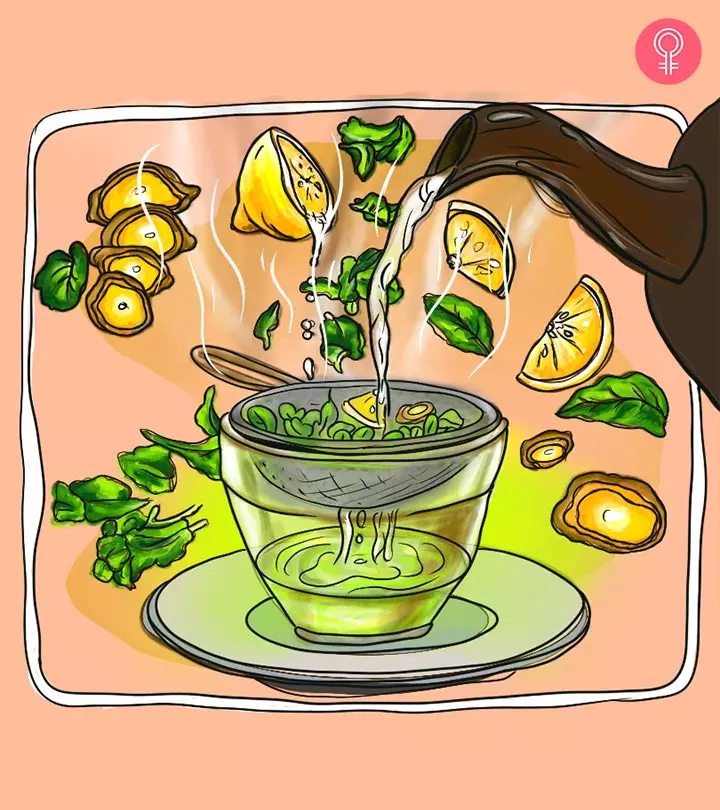
Image: StyleCraze Design Team
Green tea is one of the best health drinks for its benefits. Many of us are aware of its benefits and start consuming it but give up because of the bitter, bland, and grassy taste. The process you follow to make green tea is important as it can enhance the taste and help you reap all the benefits it offers.
This healthy drink can combat many ailments like kidney disease, skin disorders, obesity, neurodegenerative diseases, and heart disease and reduce cancer risk. The beneficial antioxidants in this tea are responsible for all these benefits (1), (2), (3).
Keep reading to learn the step-by-step process of preparing green tea without compromising taste and losing its benefits.
In This Article
What Is Green Tea?
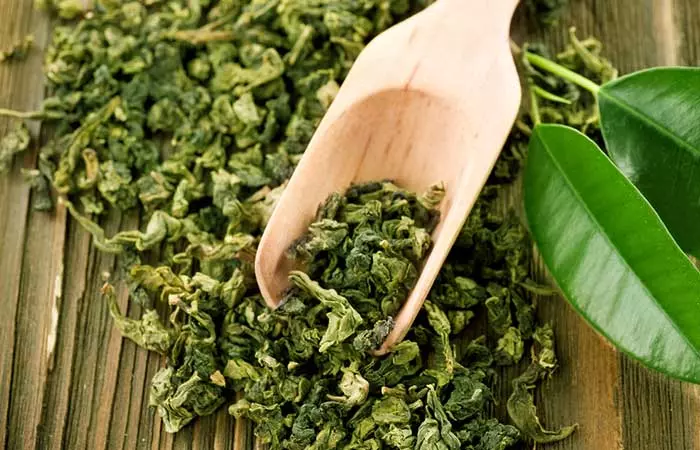
The practice of drinking green tea originated in China. Legend has it that it was discovered by Shannong, the Emperor of China, in 2737 B.C when a few tea tree leaves fell into his cup of boiled water. Later, Chinese monks started drinking green tea for refreshment and to help them meditate. They would often travel to India and other places to spread Buddhism, and they took this miracle drink with them. Thereafter, green tea gained popularity.
Green tea or Camellia sinensis is a non-fermented tea that is rich in antioxidants, particularly catechins. Antioxidants may help manage weight and lower the risk of heart disease and some cancers, improving overall health (4). Though green tea, black tea, and oolong tea all come from the same tea plant, Camellia sinensis, green tea leaves have to be picked differently. The tea pickers have to pick the fresh leaves from the apex. These loose tea leaves are then processed in a way that prevents too much oxidation. And it is this picking and processing ritual that makes green tea so antioxidant-rich.
Green tea from China has smaller leaves than green tea from Assam, India, which has larger leaves. People usually consume green tea for weight loss, but it has many other health benefits. Want to know how green tea improves our health? Find out next.
Key Takeaways
- Green tea helps reduce the risks of certain types of cancers and boosts immunity.
- You may make green tea by steeping a tea bag or brewing fresh tea leaves.
- The ratio of 3:5 green tea to water must be maintained for preparing green tea.
- Always choose whole leaf or loose green tea and store it in an airtight container to prevent them from going bad.
- Sencha, dragonwell, tencha, matcha, and hojicha are a few types of green tea you can include in your diet.
How Green Tea Improves Your Health
The catechins in green tea are antioxidants, which are responsible for all the health benefits. The main catechins present in green tea are epicatechin (EC), epigallocatechin (EGC), epicatechin-3 gallate (ECG), and epigallocatechin-3 gallate (EGCG). But the most potent catechin is EGCG (5). Now, since EGCG is an antioxidant, it scavenges the harmful free oxygen radicals and protects the DNA from damage, prevents unlimited cell proliferation, blocks cancer signaling pathways, prevents fat accumulation, protects from microbial infections, decreases fatigue, and strengthens the immune system (6).
Denise Larkin, a blogger, shared her experience with drinking green tea. She wrote about its ability to relieve a hangover. She writes, “If you drink a cup or two of Green tea during a hangover it helps clear it or at least it did for me. Green tea contains lots of antioxidants, so it’s the reason why it made me feel better (i).” Green tea has many more benefits apart from this, however she emphasizes one specific one. She notes, “It helped me lose weight whilst I was on a weight loss diet. I class it as a weight loss tea because it can help you burn fat much quicker than normal…”
It is, therefore, clear that drinking green tea on a regular basis improves your health in many different ways. So, without much ado, let me tell you how you should prepare green tea at home.
How To Make Green Tea At Home
Always use quality ingredients and the right water temperature to brew green tea, as they can significantly impact its flavor and health benefits. Once you have this sorted, making the perfect cup of green tea involves just a few steps. You can prepare green tea in mainly two different ways but can add many other useful ingredients along with green tea. Let’s start with the basic recipes.
1. How To Prepare Green Tea With Leaves
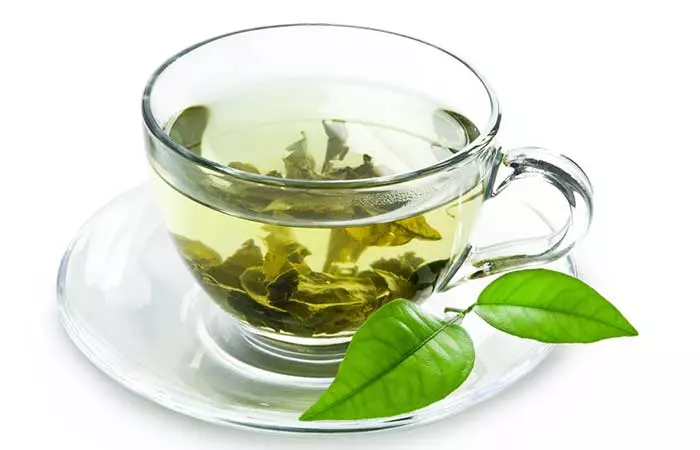
Green tea preparation is different than that of black tea that we make at home. You need to follow some simple steps. While making green tea, do keep in mind that if the tea leaves are steeped in boiling water that’s over 90°C, the tea will become bitter. So, steep it in water that’s not too hot. Here are the steps for green tea brewing with leaves.
What You Need
- Green tea leaves – the basic quantity would be 1 teaspoon for 1 cup of green tea. You may also use green tea pearls.
- A tea strainer. Wash and dry it – this step is necessary if you use this strainer to make regular black tea.
- A cup
- A stainless steel pot
- 1 cup of water
Method
Step 1
Take one teaspoon of green tea leaves. If you want to make more than a cup of green tea, take 1 teaspoon of green tea leaves for each cup. So, take 4 teaspoons of green tea leaves for 4 cups of green tea.
Step 2
Now, take the tea leaves in a strainer/sieve and keep aside.
Step 3
Now, take a stainless steel pot/pan and boil the water. If you want to use a glass teapot instead, go ahead. The ideal temperature for green tea is 80°C to 85°C, so keep an eye on the water to make sure it’s not boiling. If it starts boiling anyway, just switch off the gas/heat and let it cool for a bit (say, for 30-45 seconds).
Step 4
Now, place the sieve/ strainer over the cup or mug.
Step 5
Next, pour the hot water into the tea cup and let the tea steep for 3 minutes. This is the step where we need to be very careful. Not everyone likes their tea strong, so, to check whether the tea is just right, keep a spoon handy and drink a spoonful of tea every 30-45 seconds to find out if the flavor is right for you.
Step 6
Now, take out the sieve and keep it aside. If you want, you may add 1 teaspoon honey.
Step 7
Stir the honey in and let the drink cool for a few seconds. Enjoy your cup of green tea.
2. How To Make Green Tea With Tea Bags
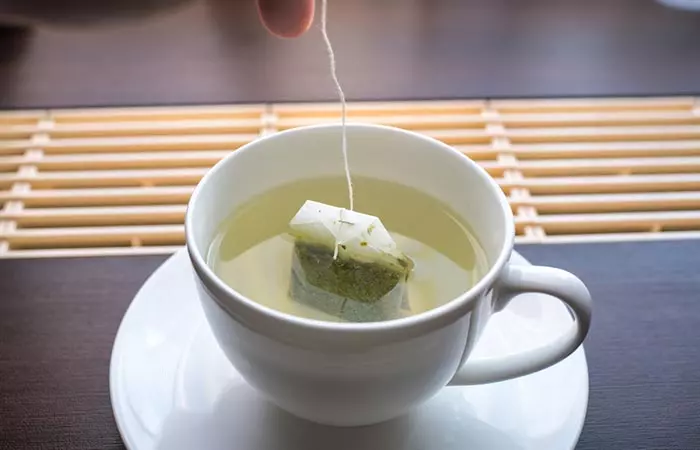
Green tea bags are, well, convenient for many people. They are portable and can be made into a hot cuppa quickly – all you need is a cup of hot water. So, here’s how you can prepare a cup of green tea with a green tea bag. If you are using tea bags, make sure they are made from an unbleached material. Most tea bags are bleached to make them white, and you definitely don’t want any bleach contaminating your antioxidant-rich drink!
What You Need
- 1 good quality green tea bag
- 1 cup of hot water
- 1 stainless steel/clay cup
- A lid to cover the cup
- A stainless steel pot
Method
Step 1
Heat the water in a stainless steel pot. Make sure it doesn’t come to a boiling point, which is 100 degrees C. The temperature of the water should be around 80-85 degrees C.
Step 2
Put the green tea bag into the clay or stainless steel cup.
Step 3
Pour the hot water into the cup and cover it with a small lid. Let it steep for 3 minutes.
Step 4
After 3 minutes is over, remove the lid and remove the tea bag.
Step 5
Stir with a spoon and take a rejuvenating sip!
3. How To Brew Green Tea With Powder
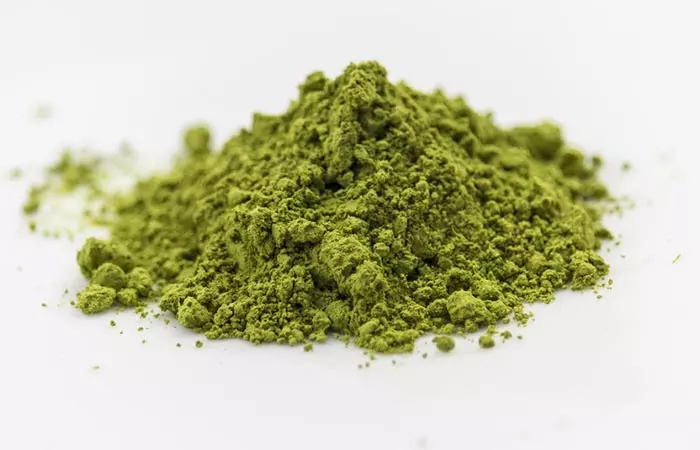
You may also prepare green tea using green tea powder, which is available readily in the market. Here’s the best way to make green tea using green tea powder.
What You Need
- Green tea powder – 1 and ½ teaspoon
- Water – 1 cup
- 1 teaspoon of honey
Method
Step 1
Take a cup of water in a stainless steel bowl or glass bowl and heat it. Remember, green tea turns bitter when it is overheated, so just keep a check on the temperature. Use a kitchen thermometer to see if it’s around 85°C.
Step 2
Turn the heat off once it reaches the boiling point. Now, let it cool for a few seconds.
Step 3
Add the green tea powder to the water. The ideal green tea brew time to soak is about 3 minutes, but you may take a sip after 1 ½ minutes to check if the flavor is strong enough.
Step 4
After 3 minutes, the color should have changed to brown. Pour it through a strainer.
Step 5
Add honey to the tea and pour into the cup.
So, this was all about the preparation of green tea in three simple methods. Though this may seem to be easy, the secret of making a perfect cup of green tea lies in the way you brew it. So, here are a few green tea brewing techniques that will help you get the right taste and flavor.
Green Tea Brewing Tips

Maintain Tea To Water Ratio
When it comes to preparing green tea, you must maintain 5:3 water-to-tea ratio. This means if you take 3 grams of green tea, you must take 5 oz water to prepare it.
Water Quality
Earlier, water was less polluted, but now it’s a different story. Therefore, we emphasize on the quality of water. The water that you use must be filtered. You can also use tap water if you trust the source. Do not use distilled water.
Water Temperature
Water temperature is highly crucial when it comes to preparing green tea. Do not boil the water as too hot water can reduce the healthy properties of green tea. Always maintain a temperature of 85 degrees C or 170 degrees F. You can use a thermometer to maintain this temperature accurately.
Brewing Vessel
Choose a small brewing vessel, about 100-200 ml, for a single serving. You can use traditional Chinese or Japanese tea brewing vessels. They are known as gaiwan or shiboridashi.
Steep Time
You do not need to steep it for too long. A good 2-3 minutes will do the trick. Moreover, if you steep green tea beyond the limit of 3 minutes, the green tea will turn bitter and grassy in taste.
Removing The Tea
You may use a strainer to pour the tea into a different cup. Or, you can use an infuser.
Learn about the key differences between green tea and black tea in the section below.
 Trivia
TriviaWhat Is The Difference Between Green Tea And Black Tea
| Feature | Green Tea | Black Tea |
|---|---|---|
| Processing | Minimally processed, with leaves quickly steamed or pan-fired to prevent oxidation. | Undergoes complete oxidation, turning the leaves dark. |
| Caffeine Content | Generally contains lower caffeine levels, around 20-45 mg per 8 oz. cup. | Typically has a higher caffeine content, ranging from 40-70 mg per 8 oz. cup. |
| Flavor and Aroma | Has a light, grassy, and slightly astringent taste. | Has a rich, bold flavor with malty, floral, or fruity undertones |
| Antioxidant Content | Rich in antioxidants, majorly EGCG (epigallocatechin gallate). | Contains antioxidants in low quantities due to oxidation. |
Now, wouldn’t it be a bit boring to drink the same green tea over and over again? Or, what if you are someone who just doesn’t enjoy drinking green tea but would still like to reap all the green tea benefits? Well, I have good news for you. Here are a few green tea recipes and tips for you that will motivate you to drink green tea every.single.day!
Healthy Green Tea Recipes

1. Cinnamon Green Tea
Ingredients
- 1 inch Ceylon cinnamon
- 1 teaspoon green tea leaves
- 1 cup water
How To Prepare
- Transfer the water to a stainless steel pot.
- Toss the cinnamon stick into the pot and boil the water for 10 minutes.
- Now, let it cool till the water’s temperature comes down to 85 degrees C.
- Add 1 teaspoon of green tea to the pot and let it steep for 2-3 minutes.
- Strain the tea into your cup and enjoy!
2. Lemongrass Green Tea
Ingredients
- 2 teaspoons chopped lemongrass
- 1 teaspoon green tea leaves
- 1 cup water
- 1 teaspoon honey
How To Prepare
- Transfer the water to a stainless steel pot.
- Toss in the lemongrass and bring the water to a boil. Let it boil for 5 minutes.
- Remove the pot from the flame and let the water cool till the temperature is 80-85 degrees C.
- Now, add the green tea and let it steep for 3 minutes.
- Strain the tea into your cup.
- Add honey and stir well before drinking.
3. Mint Green Tea
Ingredients
- 1 tablespoon fresh mint leaves
- 1 teaspoon green tea leaves
- 1 cup water
How To Prepare
- Boil the water in a stainless steel pot.
- Add the mint leaves and let it simmer for 5 minutes.
- Remove the pot from the flame and let it cool slightly.
- Then add in green tea leaves, place the pot on the stove, and let it steep for 3 minutes.
- Strain the tea into a cup and enjoy!
These are four variations and you can add any other ingredient and prepare a variety of flavorful green tea. But, there are people who do not like green tea at all. That doesn’t mean that they must deprive themselves of this amazing beverage. So, here are a few green tea recipe ideas for those who do not like green tea.
Types Of Green Tea
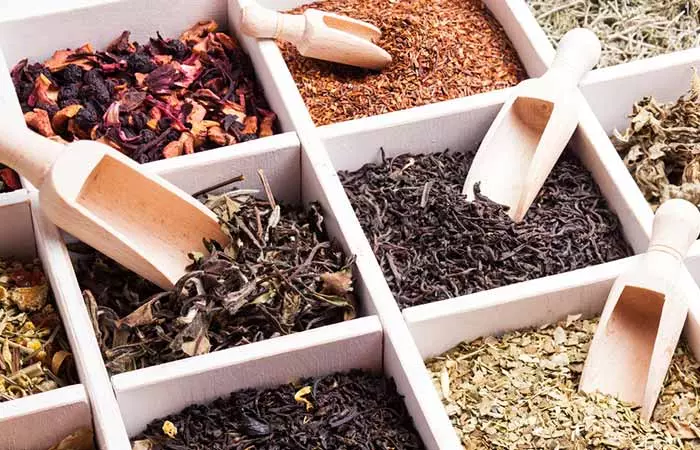
For getting the best taste and goodness of real green tea, you must try to buy it from authentic Chinese tea shops. The Chinese always have the best green tea recipes! There are many expensive ones available:
Chinese Green Tea
- Dragonwell or Lung Ching: It is one of the most expensive green teas. It is bright green in color and is produced in very little quantity – hence the high price.
- Jasmine Green Tea: Jasmine green tea is nothing but jasmine flower flavored green tea. It tastes sweet and is fragrant. It contains a high amount of catechins.
- Gunpowder: It is also known as pearl tea as the leaves of this tea is rolled into small round shapes – therefore the name gunpowder. Tightly rolled gunpowder tea is considered the best one.
- Pi Lo Chun (bi Luo Chun): This tea is grown in the Dongting mountains in China and has a fruity taste. Its floral aroma and white hairs make it distinct from all other teas.
 Trivia
TriviaJapanese Green Tea
- Sencha: If you want a sweeter variety of green tea, consider getting Sencha, which is a sweet green tea and is cheaper than dragon well (7). It is easily available at the stores.
- Sincha: This green tea is popular in Japan and is made from the first harvest of the season. This tea is completely processed, which keeps it fresh and aromatic. However, it contains fewer catechins and caffeine (8).
- Bancha: It is a cheaper version of Sencha, and is also less flavored.
- Kuchika: Kuchika tea or twig tea is also known as bocha and is a tea made of twigs, stems, and stalks. It has a nutty and sweet flavor and you can steep it for 3-4 infusions.
- Tencha: Tencha is leaf of the tea used to make matcha. The color is pale green and tastes mellow.
- Matcha: It is one of the sweetest green teas available. It is the tea used in traditional ceremonies in Japan (9). It is expensive and many consider it the king of green teas.
- Gyokuro: The leaves of this green tea are shade grown and have a rich flavor but are low in astringency. It is one of Japan’s most expensive teas.
- Genmaicha: It is one of the most popular teas in Japan and has a mix of roasted rice and either sencha or bancha tea.
- Hojicha: This tea is made from finished tea leaves roasted for a few minutes and is ideal for meals (10).
Choose the one that you like the best – but, how will you know whether you bought the best quality green tea or not? Well, we have all the information right here.
How To Buy And Store Green Tea
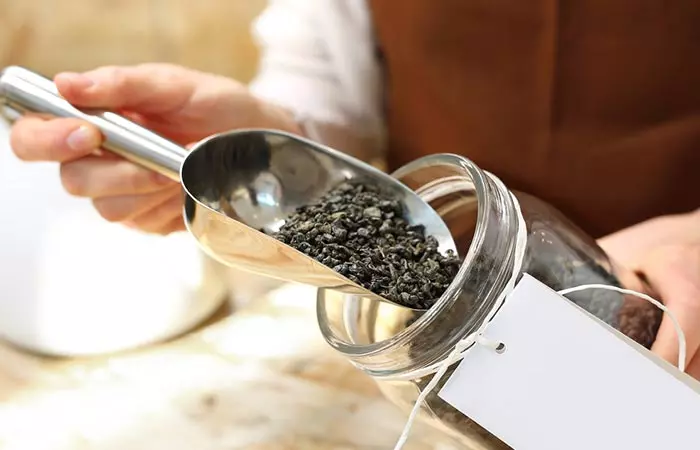
- Always buy whole leaf green tea.
- Check the origin of the green tea.
- The leaves should remain green after brewing.
- Buy loose green tea rather than the tea bag.
- After brewing green tea, after a while, the leaves should turn brown or black.
- Buy from a trusted tea seller or brand.
- Store green tea in an airtight container and protect it from light.
- Store green tea in resealable bags. Put these bags in airtight containers.
Here are a few best green tea brands that you may try.
Best Green Tea Brands To Consider
- Mariage Freres
- Lipton
- Teavivre
- The Du Hammam
- Basilur
- Tetley
- Typhoo
- Harney And Sons
- Shangri La
- The Tea Spot
- Happy Valley
- Seventh Smith
- Numi
- Organic India
- Golden Tips
- Twinnings
- TeaVana
- Bigelow Green Tea
- Tzu-The-
- Yamamotoyama
Infographic: Simple Steps To Make Green Tea With Leaves
The antioxidant properties of green tea make it one of the healthiest drinks you can consume every morning. Though there are many ways to prepare green tea, one stands out as the most common and easiest way.
Check out the infographic to learn how to prepare green tea in the most common way.
Some thing wrong with infographic shortcode. please verify shortcode syntaxGreen tea can protect the DNA from damage, decrease fatigue, strengthen the immune system, and reduce cancer risk. It also prevents fat accumulation and reduces the risk of microbial infections. While it may taste bitter, bland, and grassy, you can overcome the taste by employing the preparation methods mentioned above. Learn how to make green tea and start having it – and reap all the benefits it offers.
Frequently Asked Questions
What kind of strainers can you use?
You can use a stainless steel strainer to strain the green tea.
How long should you steep the tea leaves in the cup?
Steep green tea for 3 minutes and not more than that. If you steep it for more than 3 minutes, it will taste bitter and grassy.
How much green tea should you use per cup?
You must use 1 teaspoon green tea per cup.
How to make iced green tea?
Heat water in a stainless steel pot. Bring the temperature to 85 degrees C. Do not boil the water. Remove the pot from flame and add green tea. Steep it for 3 minutes before straining it into a cup. Let it cool. Refrigerate for a few hours. Add a dash of lemon juice, if you like, and some ice cubes. Enjoy!
How do I make green tea with milk?
Green tea with milk does not serve the purpose of drinking green tea. However, if you prefer your tea with milk, add warm milk to a cup of green tea and stir well. Do not add hot milk.
Why does green tea make me feel nauseous after I drink it?
It is probably due to the caffeine present in green tea. Caffeine can cause nausea, insomnia, anxiety, diarrhea, etc. Add a few drops of lemon or ⅙ teaspoon of clove powder to your green tea so that you don’t feel nauseous. For more information on the side effects of green tea, read here!
Can I drink both green tea and ginger tea in a day?
Yes, you can. Make sure to drink it after 2-3 hours of drinking green tea.
Is it safe to reuse green tea leaves?
Yes, you can reuse green tea leaves 2-3 times – but not more than that. However, if you use green tea bags, avoid reusing them.
Which is better – green tea bags or leaves?
Always prefer the loose green tea leaves as the green tea bags contain preservatives and chemicals, and of course, the material of the bag used can also be harmful.
Can green tea make you poop?
The caffeine in the green tea can cause upset stomach and diarrhea. But sometimes, it can also cause constipation. Stop drinking green tea immediately if you suffer from either of these.
How many cups of green tea should I drink in a day?
You can drink 3-4 cups of green tea per day and not more than that.
When to drink green tea?
It is best to drink green tea at intervals of 2-3 hours. Start with a cup of green tea in the morning and then go on to have a cup before your meals.
How do I develop a taste for green tea?
Try flavored green tea in the beginning – or try iced green tea. Then, slowly start drinking green tea without any added flavors. If you still don’t like the taste, continue drinking flavored green tea.
Illustration: How To Make Green Tea &ndash 3 Simple Brewing Methods

Image: Dall·E/StyleCraze Design Team
The following video will help you learn how to make the perfect green tea at your home. You can follow these simple steps for a delicious cup of tea every time. Watch it now!
Personal Experience: Source
StyleCraze's articles are interwoven with authentic personal narratives that provide depth and resonance to our content. Below are the sources of the personal accounts referenced in this article.
i. How green tea helps me feel better,https://medium.com/skinny-is-best/how-green-tea-helps-me-feel-better-3c65c2b0e291
Read full bio of Thais Tisatto
Read full bio of Ravi Teja Tadimalla
Read full bio of Sindhu Koganti






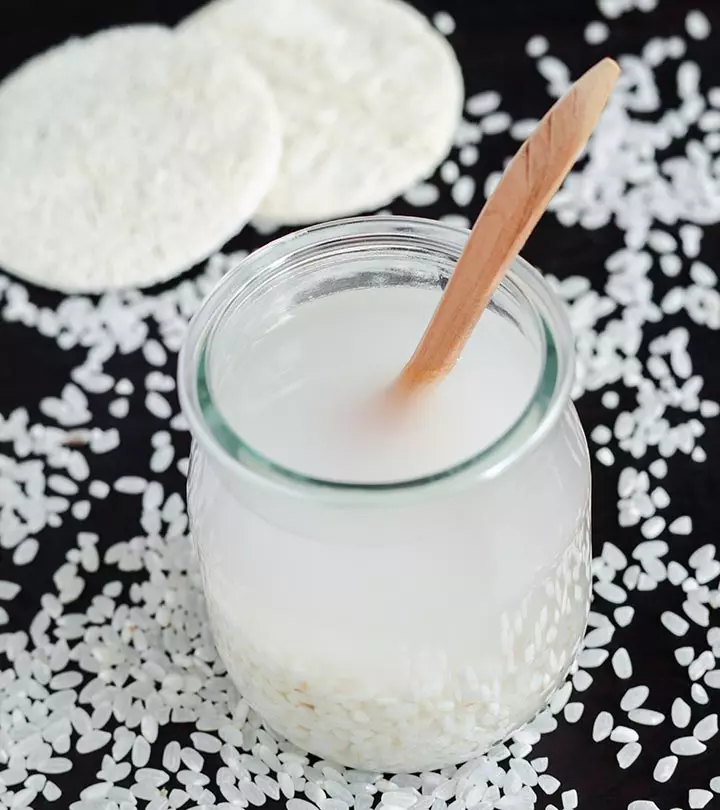
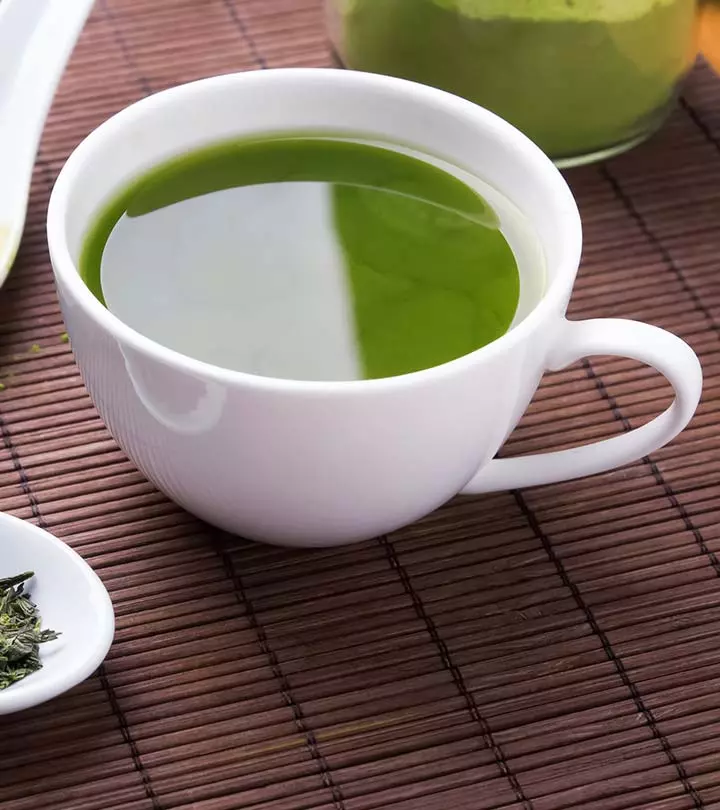
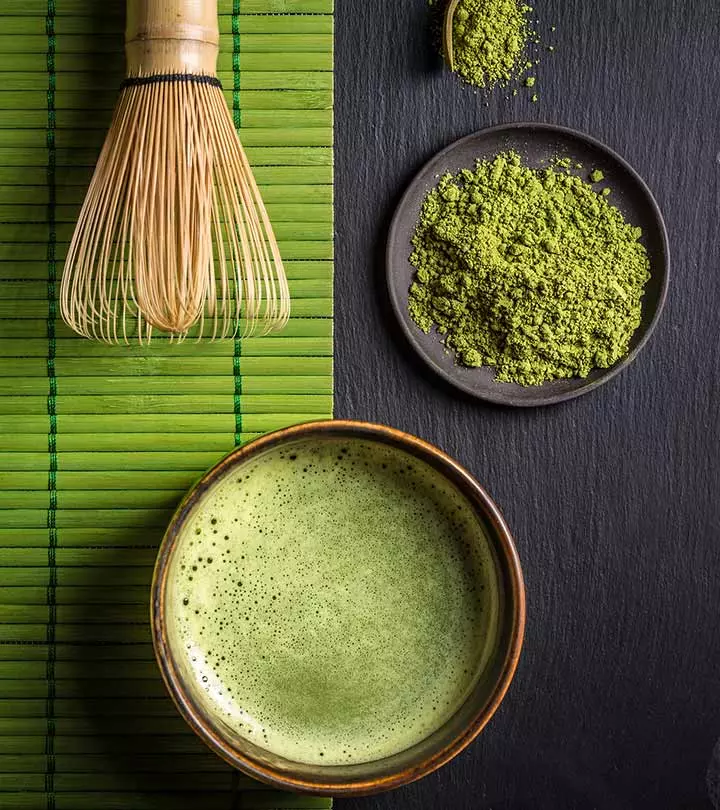




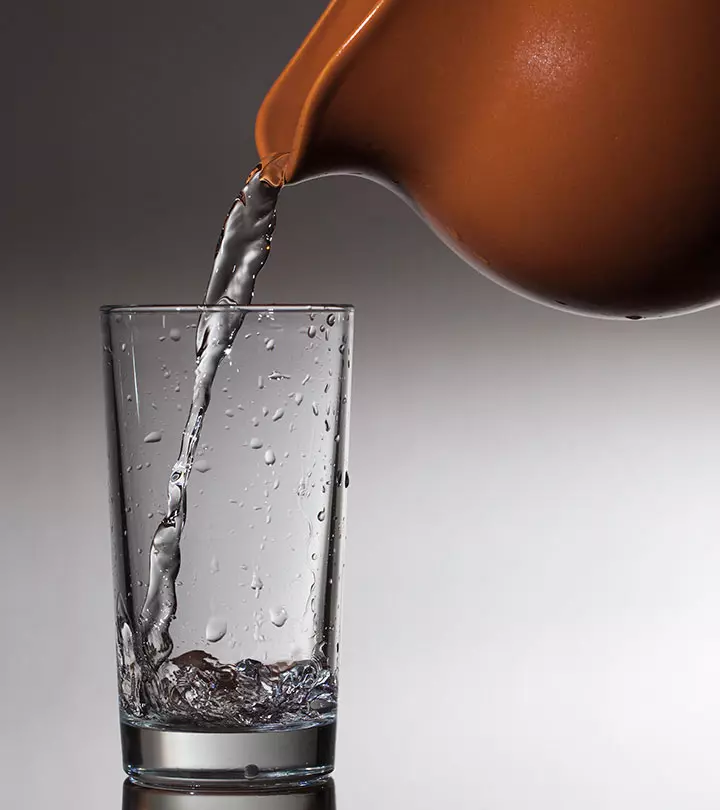

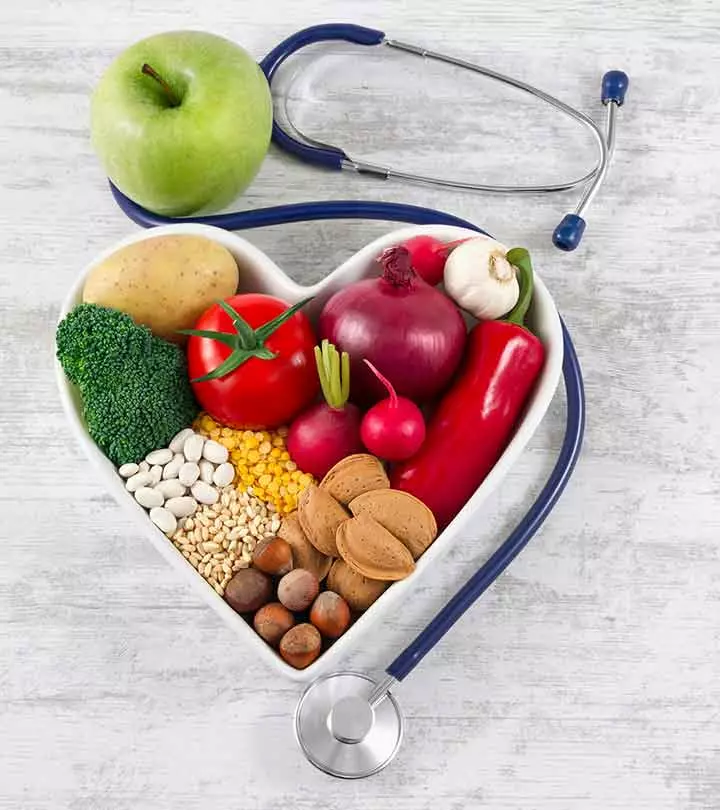
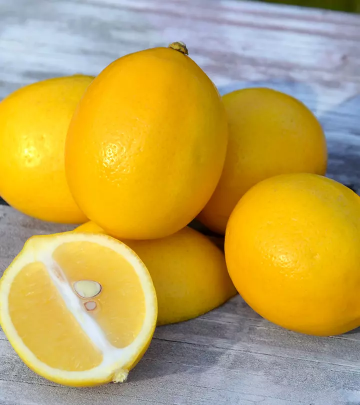
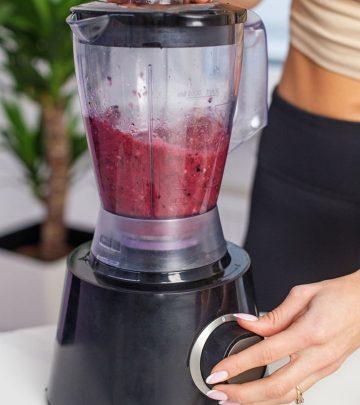

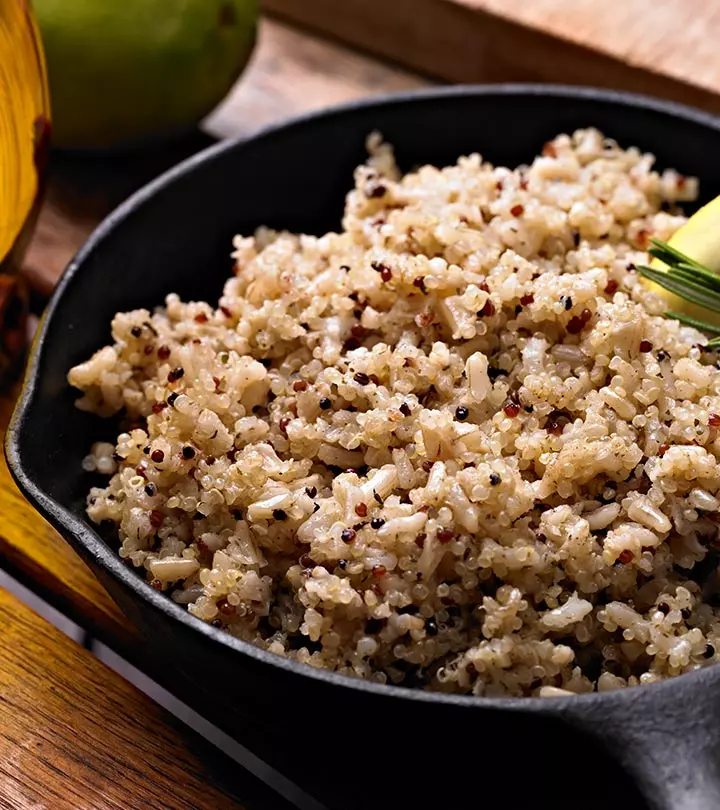
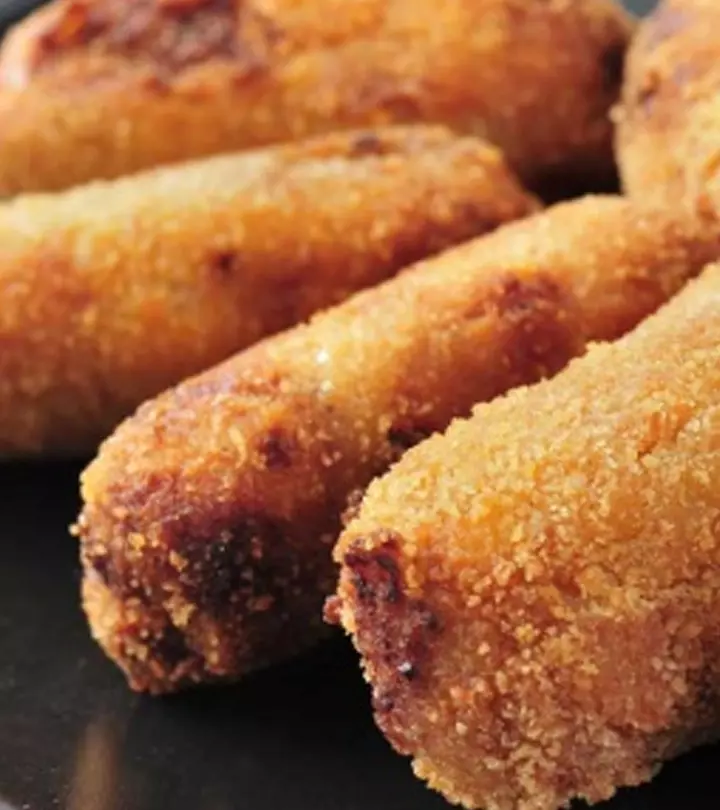
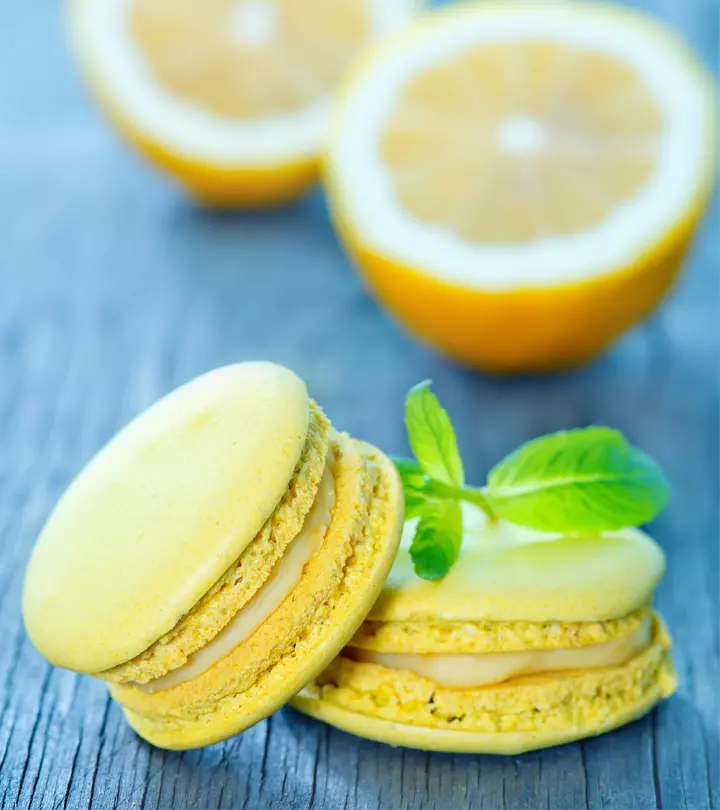
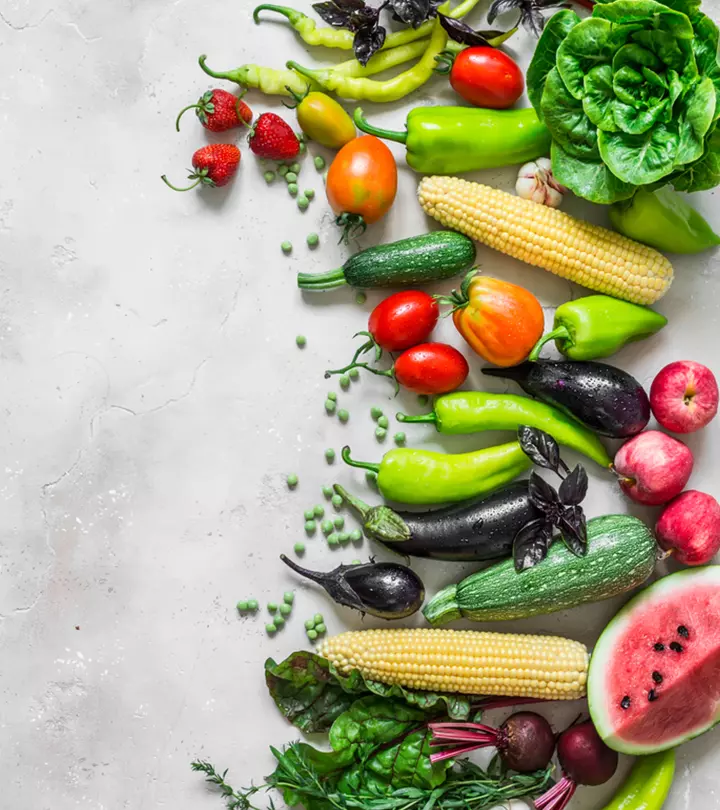




Community Experiences
Join the conversation and become a part of our empowering community! Share your stories, experiences, and insights to connect with other beauty, lifestyle, and health enthusiasts.